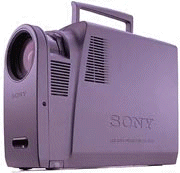Strange ReTales: The Puppy Dog Close
There are many different ways of making the sale, all with their own pros and cons.
The thing about how you close a sale, and this is where so many salespeople go wrong, is that it’s entirely dependent upon the context of each sale. How you ask for the sale depends on a whole bunch of factors, and the groundwork you’ve laid, and I’m not going to bore you with them all here and now.
Instead I’m going to tell a story that focuses on just one: The Puppy Dog Close.
I’m sure you already know this one: “Well, we have a 30-day satisfaction period, why don’t you take it home and see what you think?”
It’s called the “Puppy Dog Close” because it assumes that, like a sweet, cuddly little doggy that the customer will be so attached to the product that they won’t want to bring it back.
Like anything though, it doesn’t always work.
I used to work with a guy (who I’ll call “Don”). He was an okay guy, and he was a middle-of-the-pack salesperson.
But Don’s thing was that he ALWAYS went with the Puppy Dog Close.
Exhibit A: This Sony projector called the VPL-SC50.
Our store had one particular unit that Don had puppy-dogged over and over again. At least six times, by my count; it might have been more. Each time his latest customer brought it back within the two week satisfaction guaranteed period.
This poor projector had been sold and resold so many times that the flaps of the packaging had become seriously dog-eared. There were so many layers of packing tape on top of each other where the box had been re-sealed after opening that they were like sedimentary rock.
It wasn’t even a repack any more: it was a re-re-re-re-re-repack. Or a repack6 if you prefer.
This wasn’t the only product to suffer Chronic Refund Syndrome at Don’s hands, and he received several stern rebukes from our sales manager as a result.
Don’t be like Don. There’s no one tool for every job. Close the sale with the close that’s appropriate for the customer and the context.




